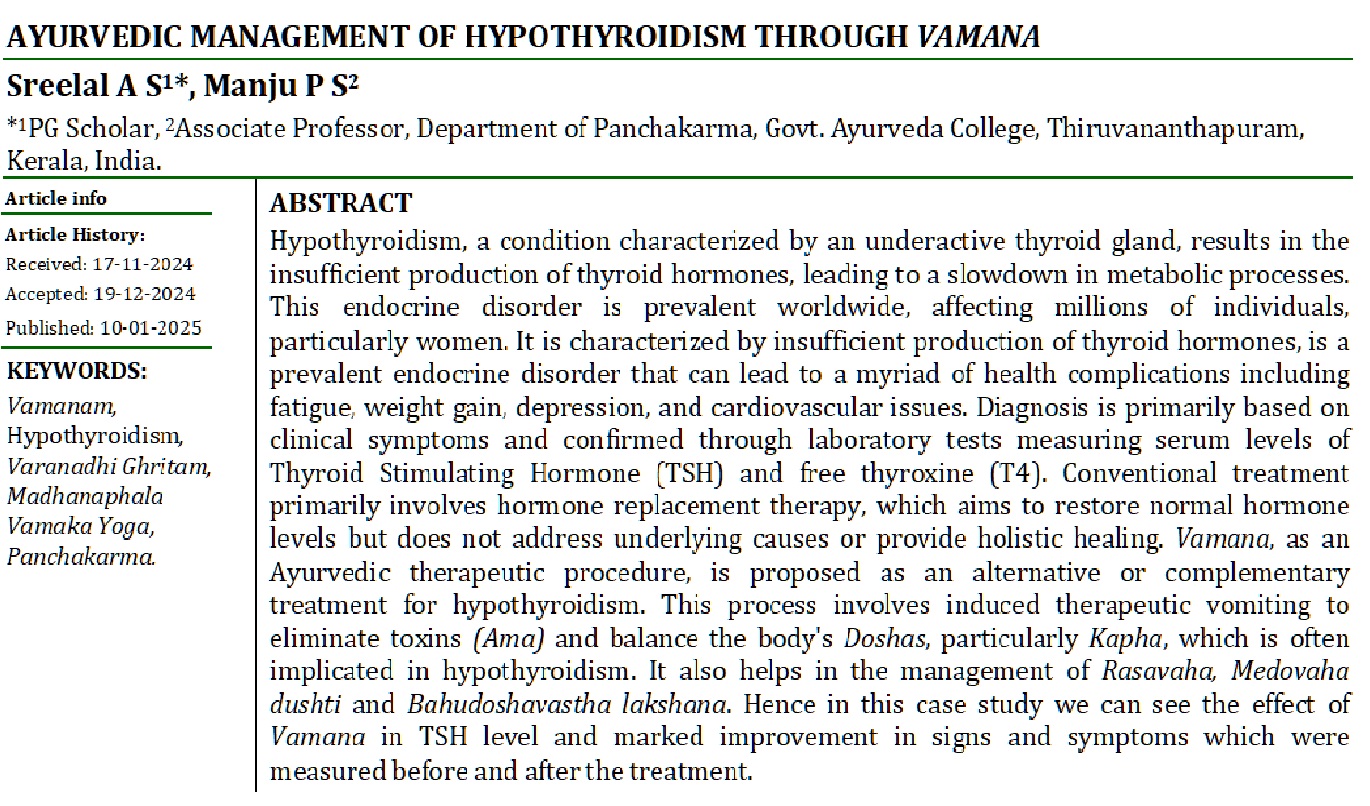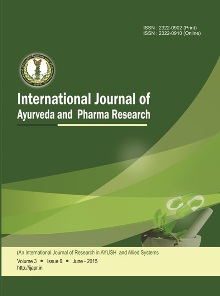Ayurvedic Management of Hypothyroidism Through Vamana
Abstract
Hypothyroidism, a condition characterized by an underactive thyroid gland, results in the insufficient production of thyroid hormones, leading to a slowdown in metabolic processes. This endocrine disorder is prevalent worldwide, affecting millions of individuals, particularly women. It is characterized by insufficient production of thyroid hormones, is a prevalent endocrine disorder that can lead to a myriad of health complications including fatigue, weight gain, depression, and cardiovascular issues. Diagnosis is primarily based on clinical symptoms and confirmed through laboratory tests measuring serum levels of Thyroid Stimulating Hormone (TSH) and free thyroxine (T4). Conventional treatment primarily involves hormone replacement therapy, which aims to restore normal hormone levels but does not address underlying causes or provide holistic healing. Vamana, as an Ayurvedic therapeutic procedure, is proposed as an alternative or complementary treatment for hypothyroidism. This process involves induced therapeutic vomiting to eliminate toxins (Ama) and balance the body's Doshas, particularly Kapha, which is often implicated in hypothyroidism. It also helps in the management of Rasavaha, Medovaha dushti and Bahudoshavastha lakshana. Hence in this case study we can see the effect of Vamana in TSH level and marked improvement in signs and symptoms which were measured before and after the treatment.
Downloads

Copyright (c) 2024 International Journal of Ayurveda and Pharma Research

This work is licensed under a Creative Commons Attribution-NonCommercial-ShareAlike 4.0 International License.






